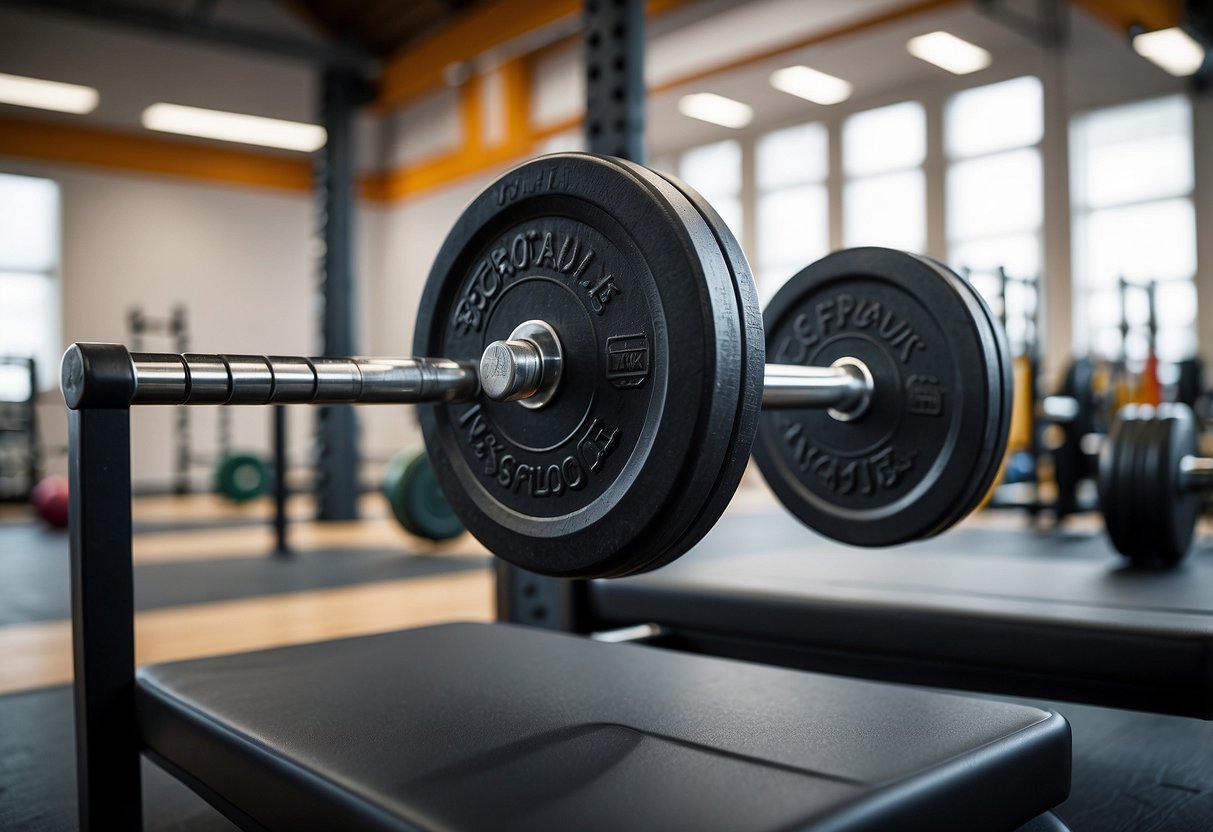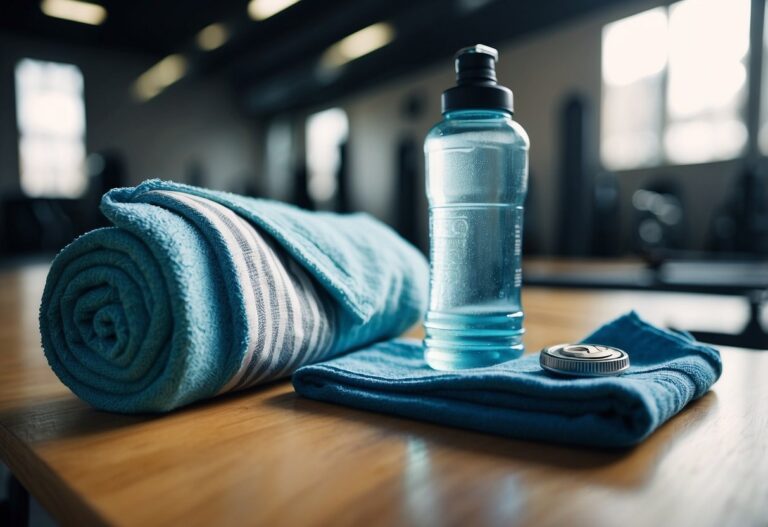Building muscle can be a challenging yet rewarding journey. Whether you’re a beginner or have some experience, there are tried and tested tips that can help you maximise your workouts. What can you do to effectively gain strength and muscle?

You might be wondering where to start or how to refine your current routine. Understanding the right exercises, diet, and recovery methods is crucial. With the right approach, you can see significant improvements in your muscle growth and overall fitness.
Maintain Proper Form

Maintaining proper form is crucial when working out. It helps prevent injuries and ensures you’re targeting the right muscles. For instance, when doing squats, keep your back straight and knees aligned with your toes.
Another common mistake is arching your back during bench presses. This can lead to back pain. Keep your back flat against the bench to avoid this issue.
Using lighter weights can help you master your technique. Sometimes, your ego must step aside. Practise with lighter weights until you feel comfortable. Then, gradually increase the weight.
Consistency in form is key. Whether you’re doing push-ups or deadlifts, practise the movements regularly. This repetition builds muscle memory, making it easier to keep proper form.
Increase Protein Intake
To build muscle, protein intake is crucial. Aim for 1.2 – 2.2 grams of protein per kilogram of body weight daily. This range ensures your muscles get the needed nutrients.
Lean meats like chicken breast and turkey are excellent sources. Fish, especially those rich in omega-3 fatty acids, also add valuable protein.
Consider protein-rich snacks like Greek yoghurt or cottage cheese in your diet. For convenience, protein powders can help you meet your goals. Remember to spread your protein intake throughout the day for the best results.
You can find more tips on increasing protein intake in this informative article.
Get Adequate Sleep
To build muscle, you must get enough sleep. Your body needs rest to repair and grow. Aim for 7 to 9 hours of quality sleep each night.
Going to bed and waking up at the same time daily can help. Consistency sets your body’s natural timetable and makes it easier to fall asleep.
Good sleep also means better workout recovery. When you sleep, your body releases hormones like testosterone that help build muscle. Missing sleep can disrupt these processes.
Create a sleep-friendly environment. Keep your room cool, dark, and quiet. Avoid screens before bedtime, as the light can keep you awake.
Consider turning off devices well before you plan to sleep. This helps signal your body that it’s time to wind down.
For more tips, check out this sleep program for bodybuilders.
Improve your sleep hygiene to see your muscle gains improve.
Stay Hydrated
You’ve got to keep your body well-hydrated to build muscle effectively. Water is key for regulating body temperature and ensuring your muscles function properly.
Before your workout, drink around 16-20 ounces of water a couple of hours ahead. This helps your muscles stay primed for exercise. During your workout, aim for about 750ml of water, but this depends on your exercise type and intensity.
Staying hydrated is also essential throughout the day. Carry a reusable water bottle to remind yourself to drink regularly. This habit ensures you maintain steady hydration levels.
Hydration is not just about drinking water; foods like fruits and vegetables also contribute significantly. These simple steps keep your performance high and help your body recover faster.
Incorporate Compound Exercises
Including compound exercises into your routine is a great way to build muscle more efficiently. These exercises work multiple muscle groups at once. For example, the bench press targets your chest, shoulders, and triceps all at the same time.
Another fantastic compound exercise is the deadlift. This move works your glutes, hamstrings, and back. It’s a powerful lift that can help increase overall strength quickly.
Don’t overlook classic moves like pull-ups and push-ups. Pull-ups engage your back, shoulders, and arms, while push-ups work your chest, triceps, and core. These exercises are fundamental and can be done almost anywhere.
Adding compound exercises into your workout not only saves time but also increases the intensity of your training sessions. Whether you’re lifting at the gym or working out at home, these exercises are adaptable and highly effective for muscle growth.
Track Your Progress
Tracking your progress is essential in a muscle-building journey. Progress photos are an excellent way to see visual changes over time. Take photos in the same lighting and poses to get the most accurate comparisons. This helps you stay motivated as you notice your body transforming.
Another effective method is to keep a workout diary. Write down the exercises, weights, and reps you complete each session. This can help you identify patterns and see where you’re improving.
Using tools like a body fat caliper can also be useful. This allows you to measure changes in body fat percentage. Many gyms have these tools available, making it easy to track improvements.
Utilise Supersets and Dropsets
Supersets are a great way to make your workout more efficient. By performing two exercises back-to-back without resting in between, you can save time and keep your heart rate up. For example, you could do a set of bench presses followed immediately by chin-ups. This method works well for maximising muscle growth.
Dropsets, on the other hand, involve reducing the weight after reaching failure in a set and continuing to lift until you can’t anymore. This technique helps you push beyond your limits. Imagine starting with 8 reps of bicep curls at a certain weight, then lowering the weight and doing more reps.
Using supersets and dropsets can significantly change your routine. These methods make your workouts more intense, helping you build muscle faster. If you’re looking to challenge yourself, give these techniques a go. For a detailed guide on supersets, visit Built With Science’s article.
Remember to listen to your body and adjust weights and reps accordingly. These advanced techniques can be very demanding, so ensure you’re adequately prepared and not overexerting yourself.
Take Rest Days Seriously
Rest days are just as important as your workout days. They help your muscles recover and grow stronger. Skipping rest days can lead to burnout or injury. Make sure you include them in your training schedule.
On rest days, consider light activities like a short walk or some gentle stretching. These can keep your muscles from getting too stiff and improve blood flow, which speeds up recovery.
You can also pamper yourself. A hot bath or a session in the sauna can relax your muscles. Don’t forget to rest your mind too. Enjoy a good book or meditate. This not only helps your body but your overall well-being.
Taking rest days seriously is key to getting the best results from your workouts.
Gradually Increase Weight
When lifting weights, it’s important to gradually increase the weight you use to see progress.
You should start with a weight you can handle easily. Once you can do your sets with good form, add a little more.
Don’t rush to lift very heavy weights quickly. Take small steps to avoid injuring yourself.
Focus on steady progress. Consider adding small weights over time, like 2.5-kilogram plates.
Always listen to your body and be consistent with your workouts. This approach helps build stronger muscles without unnecessary strain.
Focus on Muscle Groups
When you build muscle, it’s important to focus on different muscle groups. This helps you get a balanced body and avoid injuries.
Work out each muscle group regularly. This includes chest, back, shoulders, arms, legs, and abs. Rotate workouts to give each group a break between sessions.
Compound exercises, like squats and deadlifts, work several muscle groups at once. These are great for building overall strength.
For more detailed exercise routines, check out this bodybuilding program and these best exercises for each muscle group.
The Importance of Proper Form
Proper form is crucial in weight lifting for both safety and effectiveness. It helps you avoid injuries and ensures you are targeting the right muscle groups to gain maximum benefits from your workouts.
Minimising Injury Risk
When you use incorrect form, you place unnecessary stress on your body, which can lead to injuries. For instance, lifting weights with a rounded back rather than a flat one can strain your spine, potentially causing back pain or more serious spinal issues.
Keeping a neutral spine during exercises like deadlifts and squats helps protect your back. Bending your knees slightly when lifting weights reduces stress on your lower back and legs. Always warm up to prepare your muscles and joints for the workout ahead.
Additionally, improper form can lead to repetitive strain injuries. These occur when you consistently use bad form, creating small injuries over time that eventually limit your ability to exercise. Paying attention to your technique, even when you’re tired, will help keep you safe and healthy.
Maximising Muscle Gains
Correct form ensures you are effectively targeting the right muscle groups. For example, during a bicep curl, fully extending and contracting your arm focuses the effort on your biceps, leading to better muscle development.
Using proper form also helps you engage stabilising muscles, contributing to balanced strength across your body. Balance in muscle training prevents imbalances that could lead to posture problems or pain.
On bodybuilding.com, it is highlighted that using the right form, such as arching your back during lat pull-downs, allows for a more effective workout. This technique helps you get a peak contraction in the targeted muscles. By sticking to proper form, you can lift more weight more safely, which translates to better muscle gains.
Nutritional Strategies for Muscle Growth
Getting the right nutrition is crucial for building muscle effectively. This involves a careful balance of protein intake, carbohydrate timing, and healthy fats. Let’s go into each of these aspects to understand how they contribute to muscle growth.
Protein Intake
Protein is essential for muscle repair and growth. It helps to rebuild the muscle fibres that get broken down during exercise. Aim for 0.5-1 gram of protein per pound of bodyweight each day. For instance, if you weigh 150 pounds, you should be consuming between 75-150 grams of protein daily.
Incorporate a variety of protein sources such as lean meats, fish, eggs, dairy products, and plant-based options like beans and lentils. You can also consider protein powders and supplements if you find it challenging to meet your daily needs through food alone. Timing also matters; consuming protein within 30 minutes post-workout can enhance muscle recovery and growth.
Carbohydrate Timing
Carbohydrates are your body’s primary energy source, especially during intense workouts. Eating about 2-3 grams of carbohydrates per pound of bodyweight each day helps to fuel your muscles and ensure they are replenished after exercise.
Timing your carbohydrate intake can significantly impact muscle growth. Consuming carbs before a workout can provide energy, while post-workout carbs help replenish glycogen stores in muscles. Consider eating foods like rice, pasta, and oats, which are rich in complex carbohydrates. Also, fruits and vegetables can provide quick, simple sugars for rapid energy.
Healthy Fats
Fats often get a bad rap, but they are crucial for hormone production and joint health, both of which play a role in muscle growth. Aim to consume around 20-35% of your total daily calories from fat, focusing on healthy sources.
Healthy fats are found in foods like avocados, nuts, seeds, and fatty fish such as salmon. These fats help to keep your body well-fuelled and support overall health, which is important when you’re pushing yourself in the gym. Avoid trans fats and limit saturated fats; instead, prioritise mono- and polyunsaturated fats to optimise your muscle-building diet.
Optimising Workout Routines
Optimising your workout routines requires a smart approach to building muscle. It’s about ensuring you’re pushing your limits and giving your body the time it needs to recover effectively.
Progressive Overload
To build muscle, you need to consistently challenge your muscles. This is where progressive overload comes in. Essentially, you gradually increase the weight, frequency, or number of repetitions in your strength training routine. For instance, if you start with lifting 20 kg, you should aim to increase this weight over time.
Begin with compound exercises, such as squats and deadlifts, which work multiple muscle groups simultaneously. Over time, increase the resistance or the number of reps. This keeps your muscles under constant tension and forces them to adapt, which leads to growth.
It’s also crucial to track your progress. Keep a workout journal or use an app to note the weights, sets, and reps you complete. This helps you stay on track and see your improvements over time. Remember, the goal is to continuously challenge your muscles to promote growth.
Rest and Recovery
Building muscle isn’t just about what you do in the gym. Rest and recovery are equally important. After a workout, your muscles need time to repair and grow stronger. Typically, you should aim for at least 48 hours of rest between working the same muscle group.
Sleep also plays a fundamental role in recovery. Aim for 7-9 hours per night to ensure your body has enough time to repair and build muscle tissue. Incorporate stretching or light yoga to promote flexibility and reduce soreness.
Nutrition is a big part of recovery too. Ensure you’re eating enough protein, which is essential for muscle repair. Including a mix of carbohydrates and healthy fats in your diet will provide the energy needed for your workouts and recovery.







